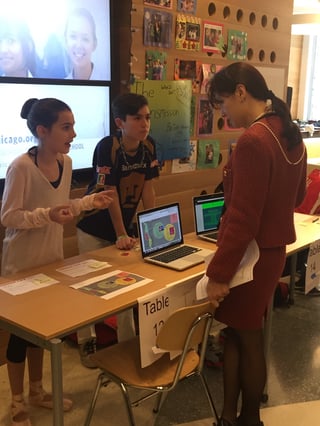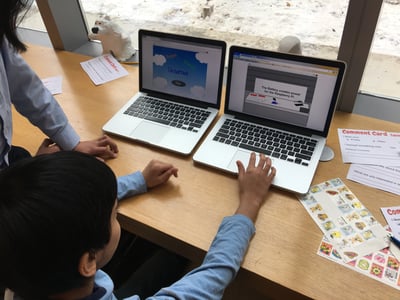THE ROLE THAT THE 'A' PLAYS IN 'STEAM' EDUCATION
December 19, 2016 admin GEMS World Academy Chicago, International Baccalaureate, Design, STEAM
Schools across the country are adding an “A” to the course of study commonly known as STEM.


This new approach, referred to as STEAM, adds the study of art (and design) to the other disciplines — science, technology, engineering and math. While the engineering component has always included a focus on design, many educators believe that specifically incorporating art and design education into the concept gives students more opportunities to innovate, discover and learn.
An early champion of the idea of changing STEM to STEAM was the renowned Rhode Island School of Design. RISD leaders believe that art, when combined with science and math, can help spark 21st-century innovation.
"Art education teaches the flexible thinking and risk-taking that are needed in today’s complex and dynamic world," the school's "STEM to STEAM" website states.
GEMS World Academy Chicago is one of the schools that has embraced the STEAM concept. Elysia Sheehan, art and design teacher at GEMS, said the addition of art gives students new entry points to discussions of abstract concepts that might have been inaccessible otherwise.
“(STEAM) allows teachers and students to look at topics with different lenses,” she said. “You can approach a subject in a new way.”
"Art education teaches the flexible thinking and risk-taking that are needed in today’s complex and dynamic world," the school's "STEM to STEAM" website states.
GEMS World Academy Chicago is one of the schools that has embraced the STEAM concept. Elysia Sheehan, art and design teacher at GEMS, said the addition of art gives students new entry points to discussions of abstract concepts that might have been inaccessible otherwise.
“(STEAM) allows teachers and students to look at topics with different lenses,” she said. “You can approach a subject in a new way.”
Sheehan and other GEMS teachers from the STEAM disciplines work together regularly to encourage students to see problems in new and different ways. During a class visit to the Art Institute of Chicago, for example, students explore and discuss paintings both from an art perspective ("How does the artist's use of lines and shapes affect the mood of the painting?") and a science perspective ("Why is the sunlight shown refracting in the puddle that way?").
"It's fascinating to see how the students will discuss the same work using different vocabularies," Sheehan said.
Design, a discipline usually paired with art in STEAM programs, plays a big role in the International Baccalaureate curriculum in place at GEMS. The school's sixth- and seventh-graders recently presented a series of design projects to the entire school community. The projects were tied to the students' semester-long work with Project Empathy, a service project in which students develop and collect content for peers across the world with little to no access to the Internet.
 Working together, students in the course followed the design-thinking process as they built receivers to send to remote areas, such as the country of Malawi, and either created or curated content to be loaded into them. The content included stories of hope, instructions on how to build a robot and general weather and health information.
Working together, students in the course followed the design-thinking process as they built receivers to send to remote areas, such as the country of Malawi, and either created or curated content to be loaded into them. The content included stories of hope, instructions on how to build a robot and general weather and health information.The work the students did with Project Empathy underscores the importance of recognizing the role of art and design in education, Sheehan said.
"The STEAM approach ultimately comes down to a mindset," Sheehan said. "It helps students become open-minded and collaborative. It teaches them that learning is a process, and that there may not be a 'right answer' to every single problem. It helps students become risk-takers and instills the passion they need to solve problems. These are the traits the world will need in its future leaders."
Submit this form to request information about GEMS World Academy Chicago.